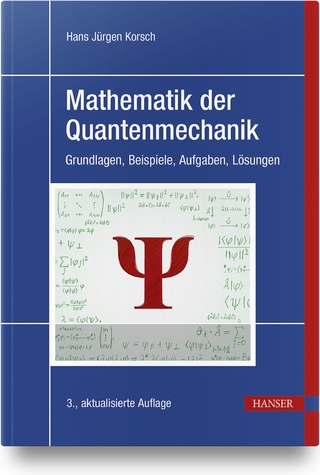
Decision Making under Interval Uncertainty
De Gruyter (Verlag)
978-3-11-030171-7 (ISBN)
- Titel wird leider nicht erscheinen
- Artikel merken
This book is about how to make decisions - mathematically based. These are the topics in focus: How to elicit user's preferences. How to select the best alternatives. Which characteristics should we select when describing probabilities? The need for interval uncertainty. Decision making under interval uncertainty: straightforward approach, remaining problems, solution. What if we cannot even elicit interval-valued uncertainty: symmetry approach. Questions beyond optimization.
Vladik Kreinovich, University of Texas at El Paso, USA.
lt;p>Chapter 1. Introduction: How to make decisions
Chapter 2. How to elicit user's preferences: utilities approach
2.1. A natural scale for preferences: utilities
2.2. Relation between different utility scales
2.3. How to compute utility of a decision
Chapter 3. How to select the best alternatives.
3.1. Need for optimization
3.2. Traditional calculus approach and its limitations
3.2. How to guarantee that a region has no optima: need for
interval computations
3.3. Main ideas behind interval computations: straightforward
interval computations, mean value form
3.4. How interval computations can be effectively used in
optimization: straightforward approach
3.5. How interval computations can be effectively used in
optimization: advanced techniques
Chapter 4. Which characteristics should we select when describing
probabilities?
4.1. Need to select characteristic most appropriate for decision
making
4.2. Case of a smooth objective function: moments
4.3. Case of a step-wise objective functions (e.g., satisfying
constraints): cumulative distribution functions (cdf)
Chapter 5. Describing probability distributions: need for
interval uncertainty
5.1. Need for interval uncertainty
5.2. Bounds on moments and how to propagate them through
computations
5.3. Bounds on cdfs (p-boxes) and how to propagate them through
computations
Chapter 6. Decision making under interval uncertainty:
straightforward approach
6.1. Main idea: select a decision that may be optimal
6.2. From the idea to an algorithm
6.3. Limitations of the straightforward approach
Chapter 7. Decision making under interval uncertainty: advanced
approach
7.1. Natural requirement: the selection should not change if we
re-scale utilities
7.2. Resulting idea: Hurwicz optimism-pessimism criterion
7.3. Too much optimism may lead to bad decisions
Chapter 8. What if we cannot even elicit interval-valued
uncertainty: symmetry approach
8.1. Need to go beyond interval-valued utilities: general problem
8.2. Case study: how to select a location for a meteorological
tower
8.3. Symmetries
8.4. How to use symmetries to find the best decision under
uncertainty
8.5. Case study: how we selected a location for a meteorological
tower
Chapter 9. Beyond optimization
9.1. Examples of problems beyond optimization: control,
decision making under adversity, etc.
9.2. Control problems and the modal interval approach
9.3. Beyond modal intervals
| Erscheint lt. Verlag | 29.1.2025 |
|---|---|
| Reihe/Serie | De Gruyter Studies in Mathematics |
| Verlagsort | Berlin/Boston |
| Sprache | englisch |
| Maße | 170 x 240 mm |
| Themenwelt | Mathematik / Informatik ► Mathematik ► Analysis |
| Schlagworte | Control • Decision Making • Entscheidungstheorie • Interval Uncertainty • interval uncertainty, decision making, utility theory, p-boxes, modal intervals, symmetries, control • Interval uncertainty; Decision making; Utility theory; p-boxes; Modal intervals; Symmetries; Control • Modal intervals • p-boxes • Symmetries • Utility Theory |
| ISBN-10 | 3-11-030171-7 / 3110301717 |
| ISBN-13 | 978-3-11-030171-7 / 9783110301717 |
| Zustand | Neuware |
| Haben Sie eine Frage zum Produkt? |
aus dem Bereich


